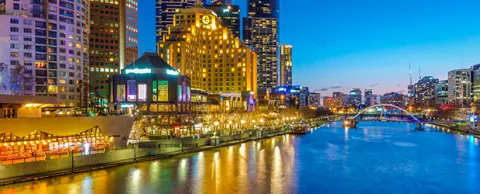
Melbourne’s liveability has always been its strong suit, taking out yet again the top spot in the Economist Intelligence Unit rankings. But one emerging contributor – its smart cities focus – could also be playing an important part in the daily experience of the city.
The city’s smart cities investments are starting to pay off, providing opportunities to streamline core services yet provide better services. And this is possible when you embrace a data driven culture.
In this story, we gain insights into the people-centred smart cities approach being implemented in Australia’s second largest metropolis. — Adam Beck
In a smart city, which comes first: the technology or the people? While many cities start with the tech and think about what they could do with it, Melbourne is finding success by trying the exact opposite approach.
Melbourne Chief Digital Officer Michelle Fitzgerald described the city’s mind set and the results from it in a recent interview with the Australian Broadcasting Corporation.
A shift in thinking
Fitzgerald says every smart cities discussion in the city starts with one question: "Who are the people coming to the city every single day to work, to live, to play and to learn?"
There’s no one persona. The people range from students to business owners to tourists. But the question does prompt city staff to focus on who they’re trying to help.
What that shift means
While smart cities are data-driven, concentrating on people first causes planners to look at different sets of data. For instance, traffic congestion is a problem for most cities, but if you were to look only at commute times, you would fail to serve segments of the city’s population.
Understanding that the city is made up of different groups of people — some drive to work, others walk to school — prompts planners to look at a variety of metrics and develop a range of solutions to different issues. Drivers are concerned with commute times, of course, but people who walk are much more concerned about safety. And business owners want to make sure there’s always an available parking for their customers.
In practice, Melbourne has invested in open data to provide comprehensive analytics about who comes into the city and from where each day. Sensors on rubbish bins reduce traffic from garbage trucks, since trucks are only dispatched when the bins need to be emptied. And the next step is to install parking sensors to make sure spaces turn over for businesses.
Strong results
The approach appears to be working. Melbourne ranked as the world’s most liveable city by the Economist Intelligence Unit. Its job creation and other growth measures are also stronger than average.
But the stakes are high. By some estimates, some 40% of the jobs we have today could be automated someday. Melbourne wants to guarantee its strong growth by attracting highly-skilled workers whose jobs wouldn’t be lost to automation.



